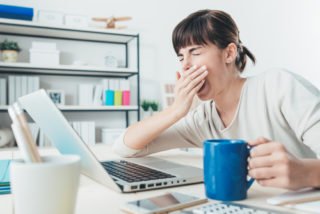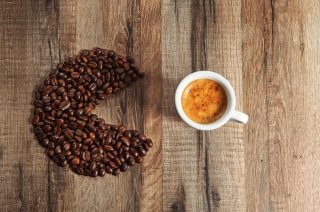Let’s be honest. If by this time you haven’t mastered the art of living in loungewear while you work from home, tried about six different new hobbies, and found yourself working through about four new series simultaneously, are you even living through this pandemic?
However, if there’s one activity we’ve found a new appreciation for, it’s the good old midday nap. Far from being a childhood pastime, napping is increasingly being seen as a way to boost your brain and energy levels. Not to mention get you through the dreaded afternoon slump that many of us experience after lunch.

And research is on our side on this one, backing the little indulgence that many of us can now enjoy in between Zoom meetings, snuggled in our favourite blankets, and wearing a comfy WFH shirt.
Even before the pandemic, companies like Google, Facebook, Ben & Jerrys, Uber, Zappos embraced the benefits of enjoying a short nap during the day, and allowed their employees to nap at work in specially designed spaces. According to a variety of studies, these benefits include the following:
- improved alertness and better cognitive performance
- better mood and higher levels of tolerance for frustration
- decreased sleepiness on the job and improved levels of energy
- possible reduced chances of developing cardiovascular disease
And considering the number of people who struggle with sleeping at night during the pandemic, taking steps to get towards a better night’s rest can only be good. Even before the coming of coronavirus, around 70% of Americans reported that they couldn’t get enough sleep.
There is a formula to the perfect power nap, however. Follow the necessary steps and you reap the benefits. Don’t follow them and you might worsen the situation. So before you jump under the covers for some shut-eye, make sure you get it right. Here is what you need to know about the perfect nap and how it can help your brain function better:
1. Keep it short
It’s important to recognize that, while a quick nap can recharge your energy levels, one that’s too long can do the opposite. You want to set your alarm for between 20-30 minutes and avoid going into REM (rapid eye movement) sleep. If you sleep too deeply, you might end up feeling worse than you did before.
A NASA study discovered that pilots who slept a period of 26 minutes showed the best alertness improvements, up to 54%. They also had improved job performance of up to 34%, compared to pilots who didn’t nap.
2. Consider a coffee nap
This might sound counteractive, but anecdotal evidence says it works like a charm. It takes around 20 minutes for your caffeine shot to start working, which means by the time you wake up, the coffee buzz kicks in.
Adenosine is a hormone that makes you feel sleepy, and coffee works by preventing it from reaching the receptors in your brain. Because sleep reduces adenosine levels in your body, a coffee nap doubles down on helping you feel more alert. So go ahead, brew your cup of Joe, and hit the hay for extra energy. Here are 11 reasons why your morning coffee is good for your health.
3. Time it right
If you want the optimal benefits, try to get your afternoon shut-eye at the same time every day. It’s also important not to indulge too late in the day, as this can impair your sleep at night. Stick to napping between 12:00 and 14:00.
4. Create the right environment

Lopolo/Shutterstock
You want to make sure your nap takes place in a space that is:
- cool in temperature
- dark
- quiet
Want to know more?
Need some color in your life? Here’s how you can harness the use of color to improve your mood, boost productivity, relieve tension, and maximize creativity.
References
Ettman, C. K., Abdalla, S. M., Cohen, G. H., Sampson, L., Vivier, P. M., & Galea, S. (2020, September 02). Prevalence of Depression Symptoms in US Adults Before and During the COVID-19 Pandemic. Retrieved December 17, 2020, fromhttps://jamanetwork.com/journals/jamanetworkopen/fullarticle/2770146






![women [longevity live]](https://longevitylive.com/wp-content/uploads/2020/01/photo-of-women-walking-down-the-street-1116984-100x100.jpg)










